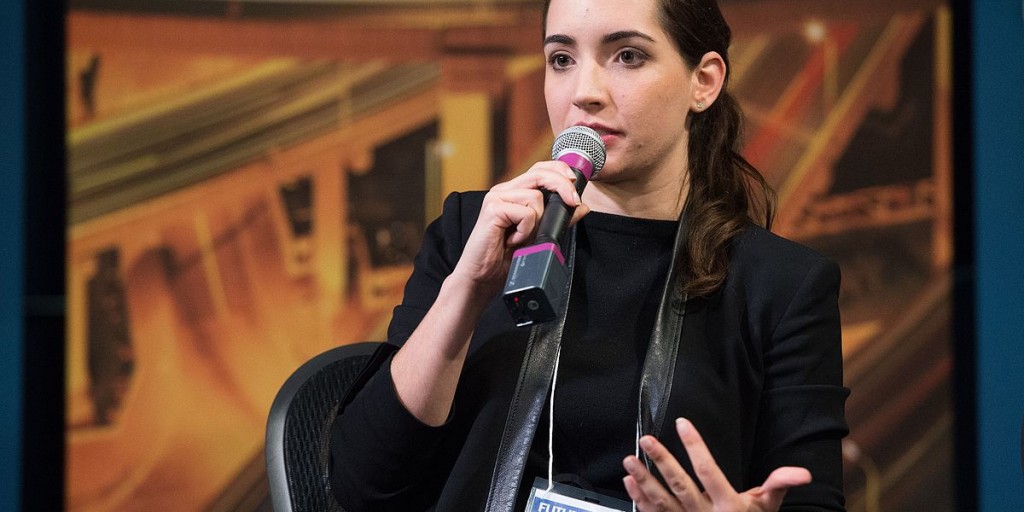Marcela Sapone: “How to leapfrog the smart home trend, and make something consumers actually want.”
NEW YORK — We’re getting closer, but the promise of the connected home is still largely unfulfilled. What we have now is the new “Internet of Things” marketplace. It’s a step in the right direction, but the market is still flooded with devices, gadgets and a few toys that are aimed at a very narrow customer set: early tech adopters.
There’s a big opportunity to flip the current model on its head.

The bright, optimistic vision for this space is to create actual utility, harmony, and hospitality that moves from a smart home into something that anticipates you, something instinctual. Technology in the home that accomplishes sophisticated actions on a resident’s behalf.
Here are a few things that bug me:
- Lack of true utility. You can program your Philips Hue to do custom colors when your team wins, or turn on your AC when you’re nearly home — but how many of you are interested in setting up an IFTTT recipe, or specifically buying wifi-enabled plugs or bulbs just to make these types of things happen?
- Lack of harmony. Technologies available under the Internet of Things banner are plagued by two acute problems: 1. There’s nothing to harmonize each of them to work as a seamless system in tune with our daily life; and 2. Most of these technologies are superficial patches that don’t actually solve big problems.
- Trend chasing. Most new “advancements” or technologies seem designed just to wow the tech press and get CES headlines even if that particular technology is redundant. Meanwhile, real utility with a wider audience in mind — beyond those in tech — has yet to truly be unlocked.
The real solution for the future of the home is rooted in clean, simple utility. Imagine a home that anticipates you, and blends online and offline services, freeing you up to focus on what you’d rather be spending time on.
It should be as frictionless as calling an Uber. The home of the future isn’t some bleeding edge futurist vision. Rather, it’s simply a home — full stop — humming with (silent) new efficiency.
With young adults increasingly moving to cities, it’s clear that the options available to them don’t actually match how they truly live. Many buildings still emphasize hyper-stylized “luxury lifestyle” features, things like roof decks and other “social” amenities that are typically never used. While well-meaning in theory, these are empty marketing holdovers from a previous era. In all of this, tech gets lost in the shuffle, and treated as an afterthought: notifying you have a package, say, or a community bulletin board or digital concierge that no one ends up using.
There’s a dire latency in building innovation that needs to be addressed. That is, bringing the idea of ‘Modern Luxury,’ as defined by Lean Luxe, into the home.
What young residents today want:
Today’s young urban-dwellers desire functionality, utility, and respond most strongly to the experiences that make their lives friction-free. Think about the commonality behind some of the best consumer successes in technology — Apple, Uber, Alexa — and what they have in common. Each has invented new categories through insight and inspired design, not merely in terms of aesthetics, but in terms of connecting the physical world with the digital. They all reduce friction and let you get on with what you want to do. The technology they embody, in other words, is a means to a more seamless end — not the end goal in itself.
How can their living space react to this?
The ideal state is a home that blends a service layer handled by highly trained people, with a tech layer. The end goal: To create a new style of anticipatory service, or as the Japanese call it, Omotenashi.
What does this look like in practice?
To further explain, the home of the future blends an operating system built into the property that lets you order groceries, call in repairs, handle your dry cleaning and laundry. But it also embraces the critical element of trust: People feel safe knowing there’s a human trained in hospitality handling all of these tasks for them. The two beautifully compliment each other.
So, someone uses a clear, intuitive mobile app, types in what they need for the week, and they return home with everything done. It’s all on autopilot. Instead of tech novelty, it is air traffic control for the home, choreographing unneeded friction into harmonious execution (and hospital corners on a perfectly made bed).
Over time, your preferences of fresh flowers when you return home from a trip, the exact kind of sparkling water you like, your dietary preferences and how you need that delicate piece of clothing handled become standard. It’s a system that builds in knowledge and utility over time.
Tech cannot solve everything in modern residences, and it is one part of the equation. The entire formula requires buildings, great technology designed as well as the best consumer apps, and highly trained human beings coming together to deliver something the world hasn’t seen yet.
This vision is not far off from being reality.
—
Lean Luxe subscriber Marcela Sapone is the co-founder and CEO of Alfred, a NYC-based on-demand hospitality and services company. The views reflected here are those of the author and do not necessarily reflect the views of Lean Luxe.






